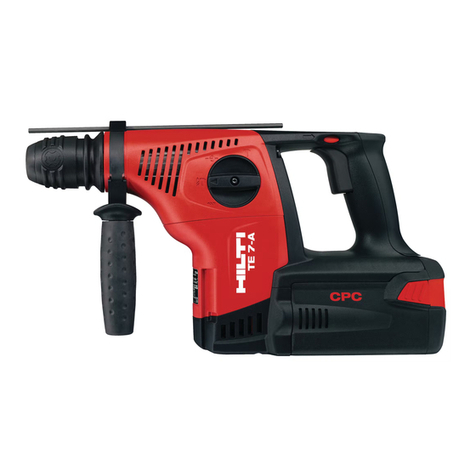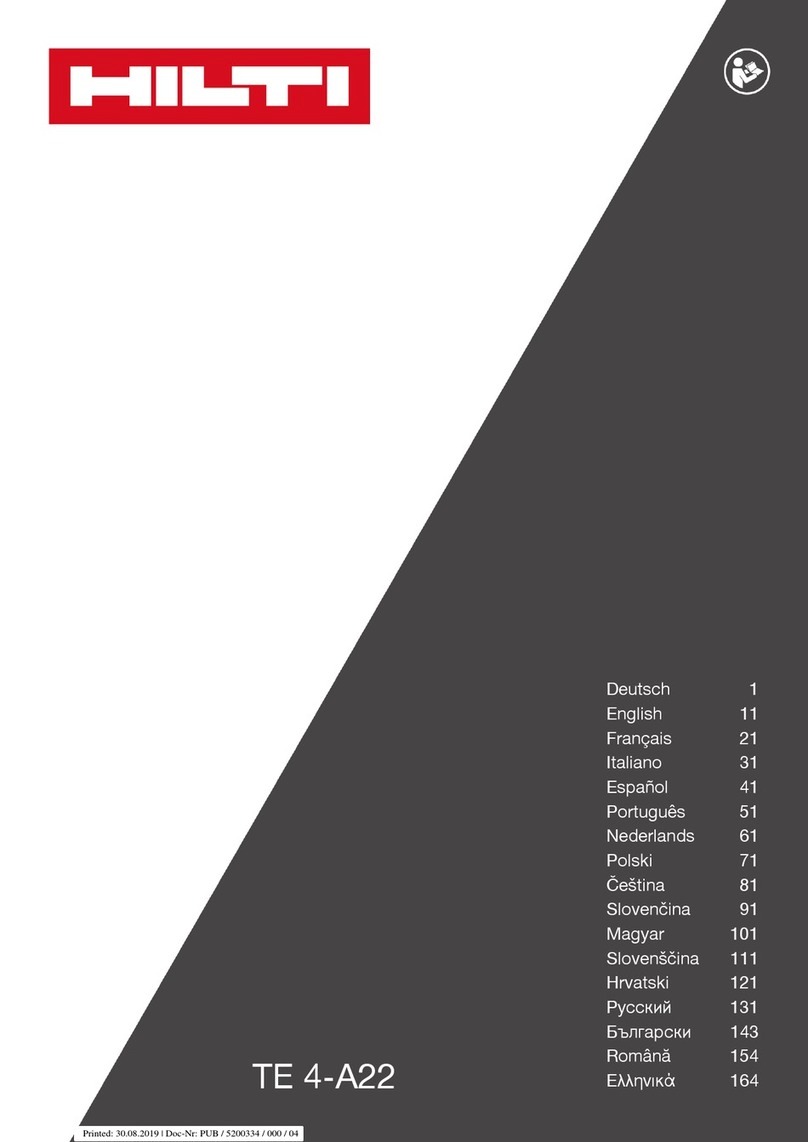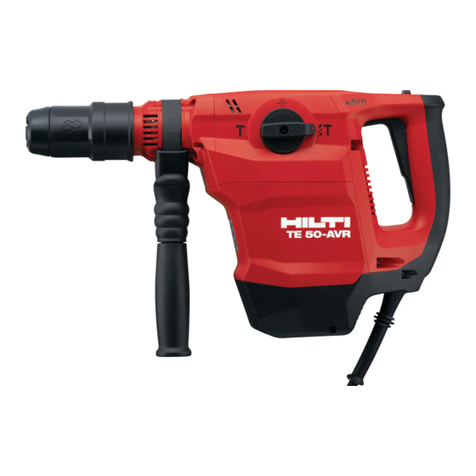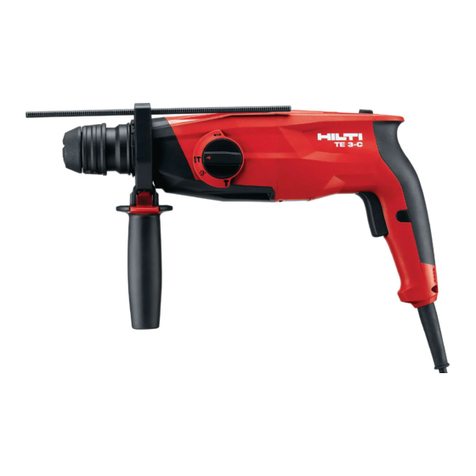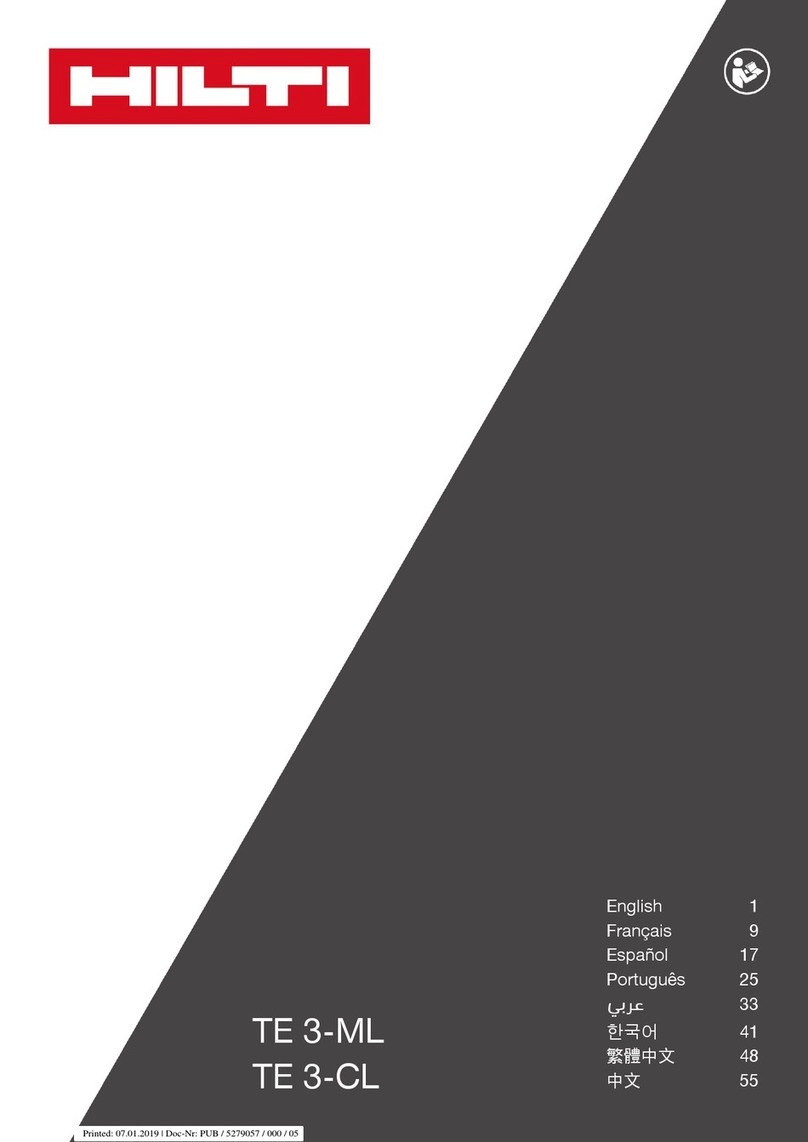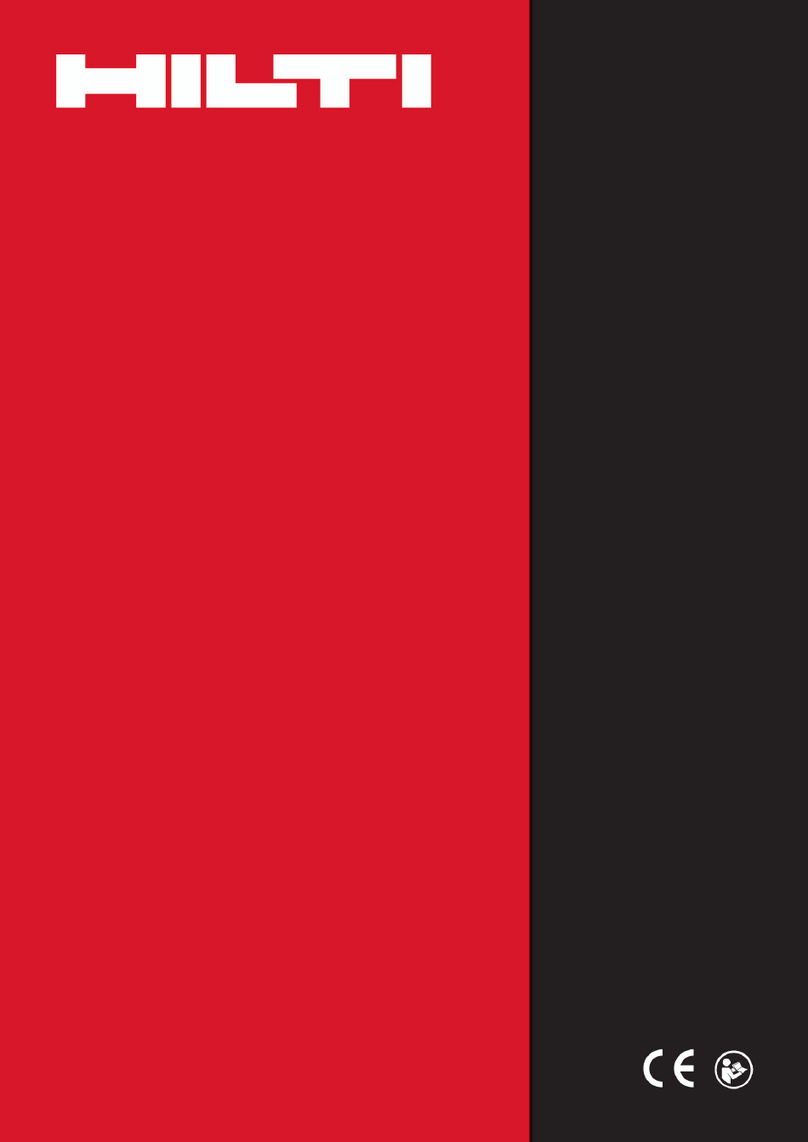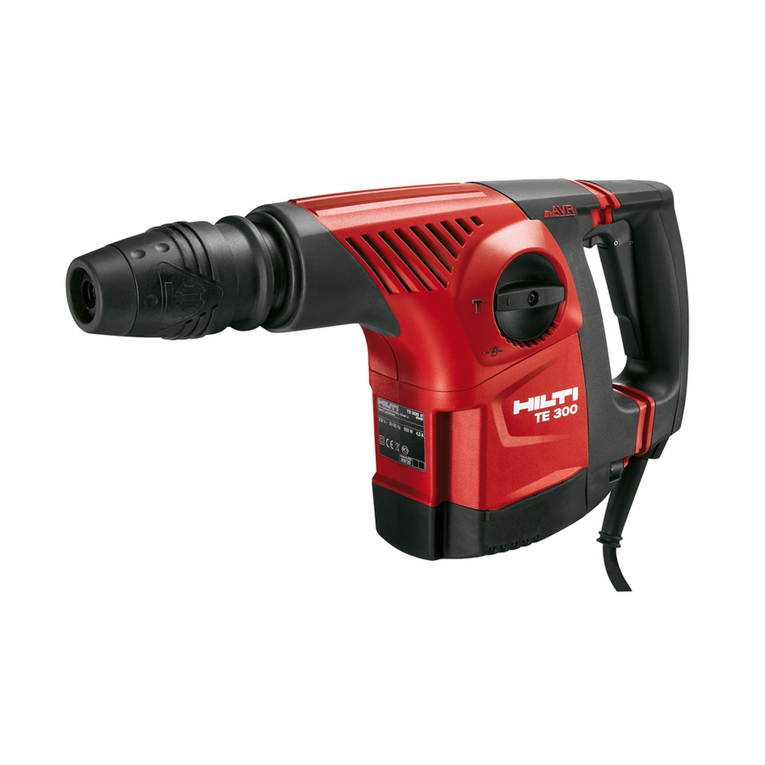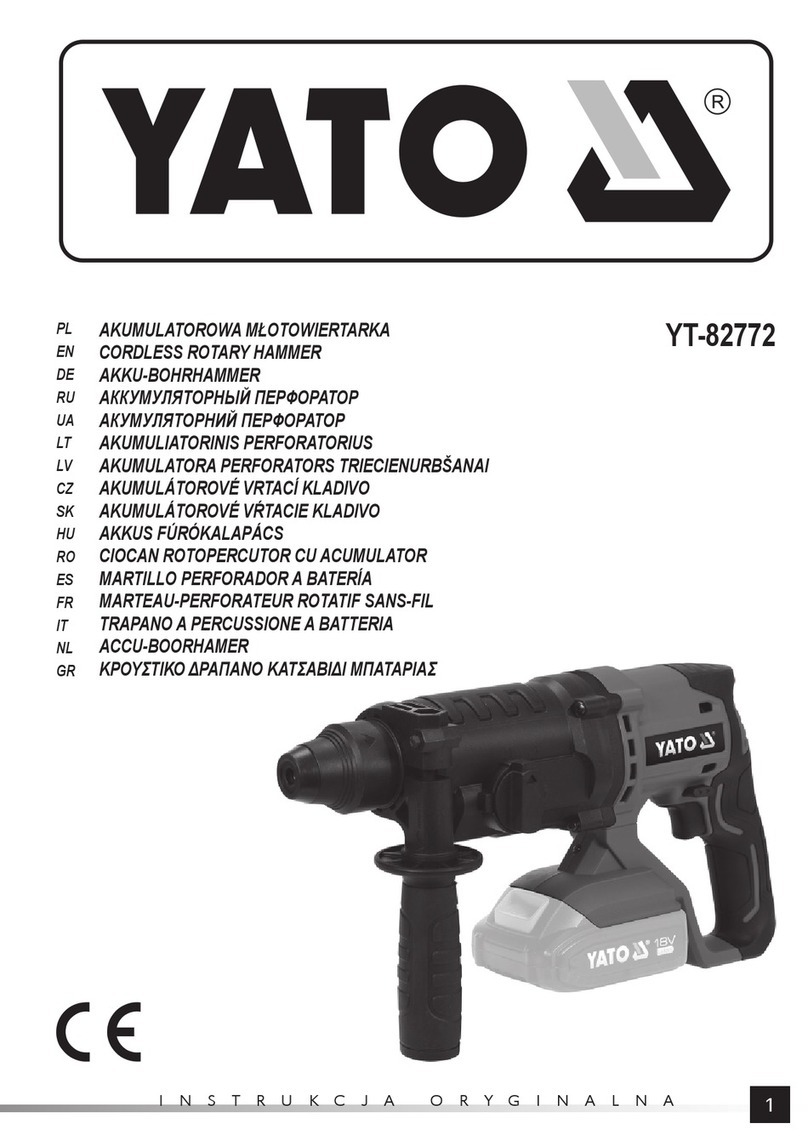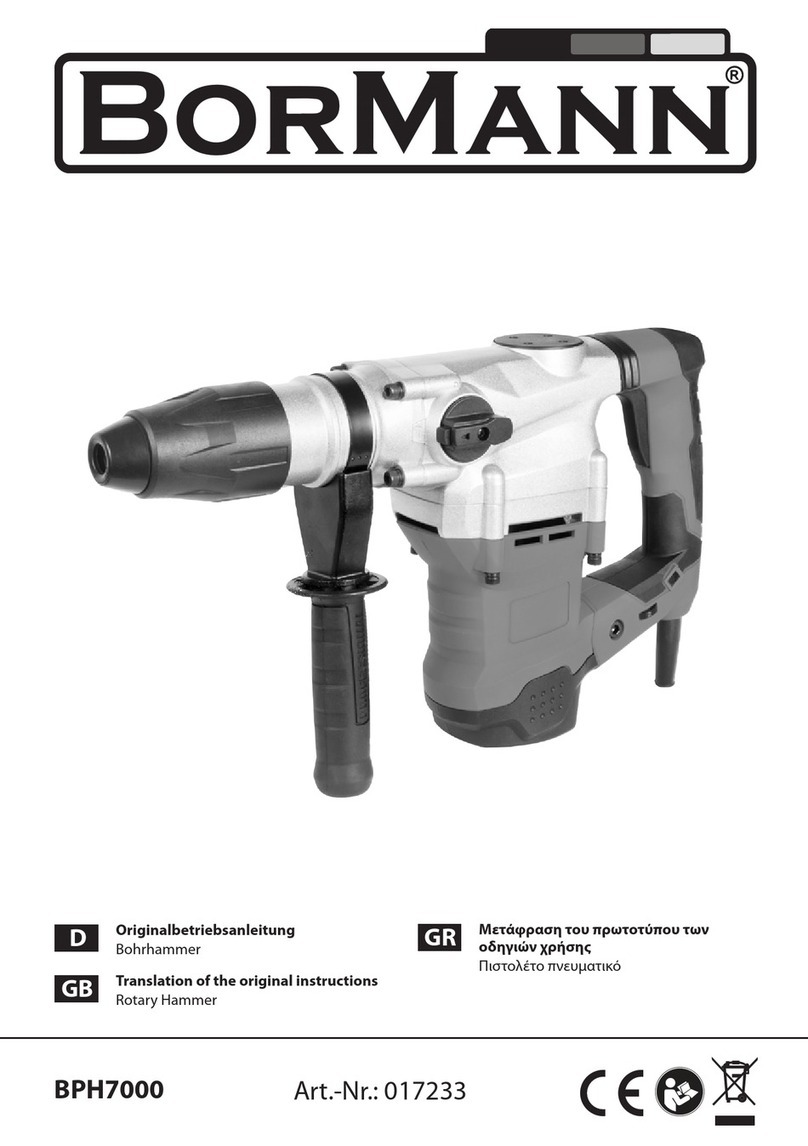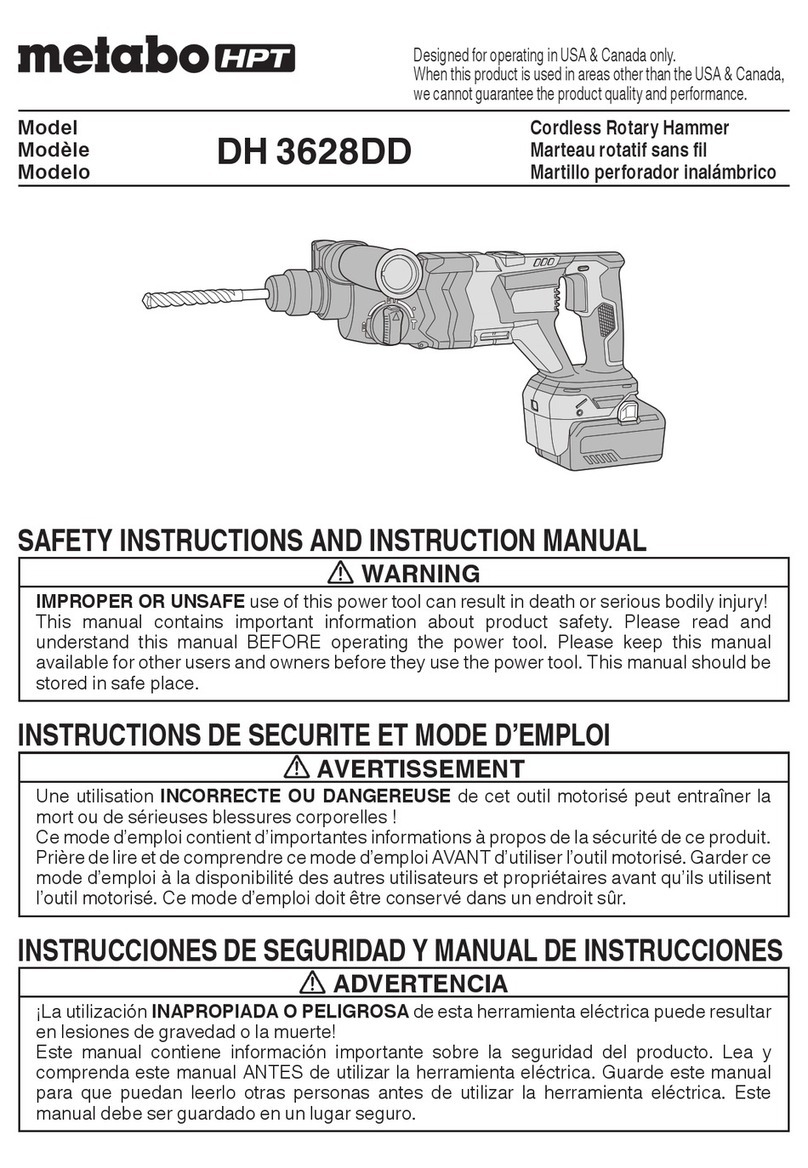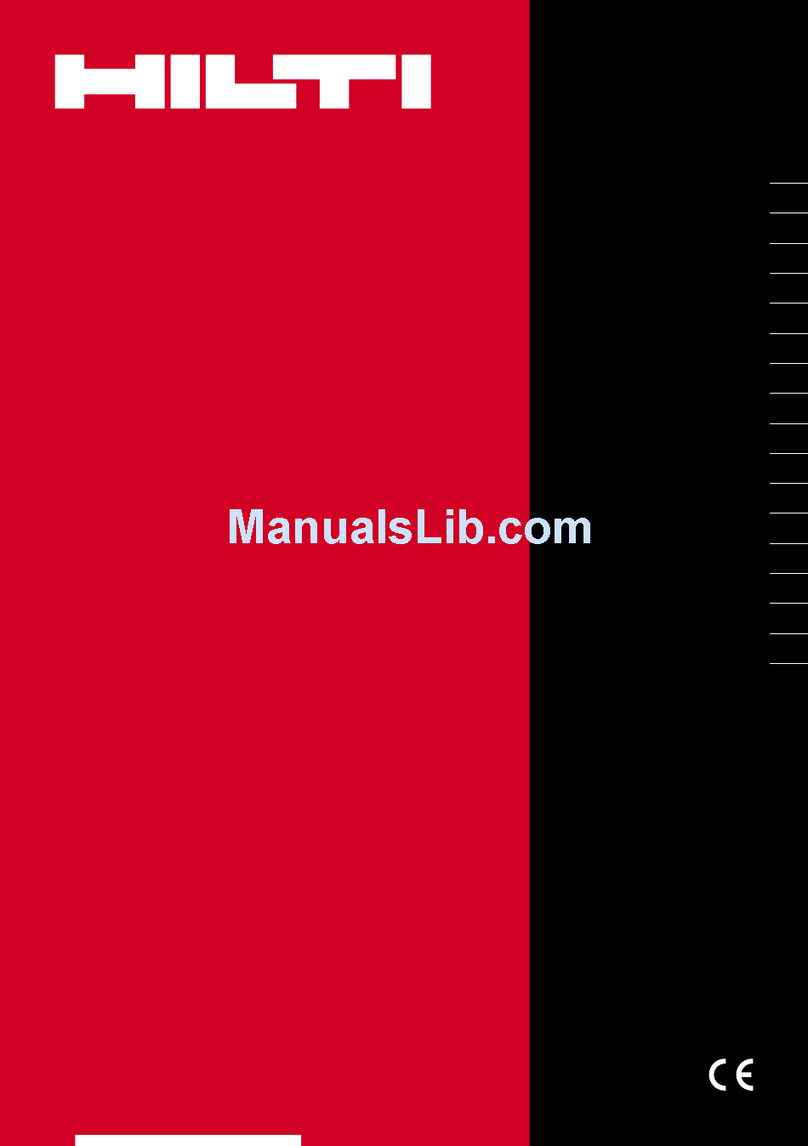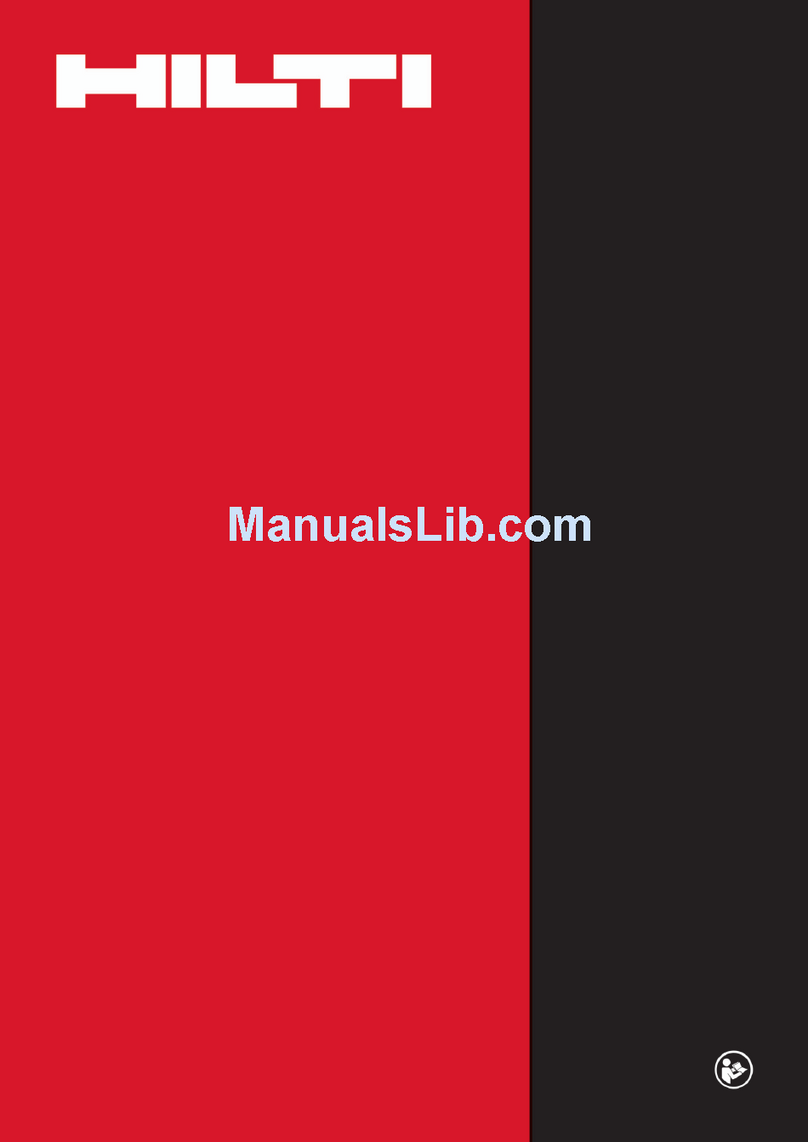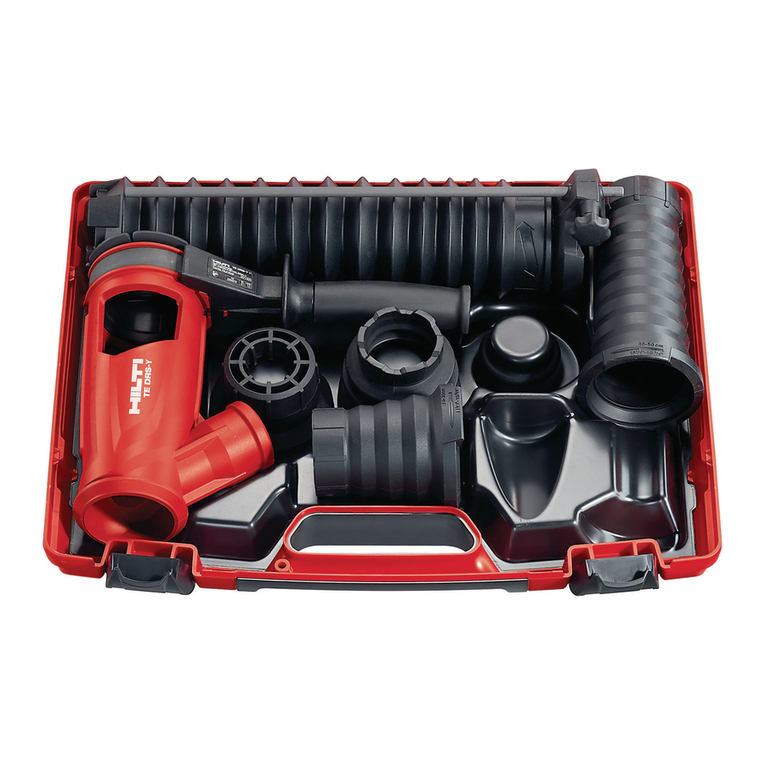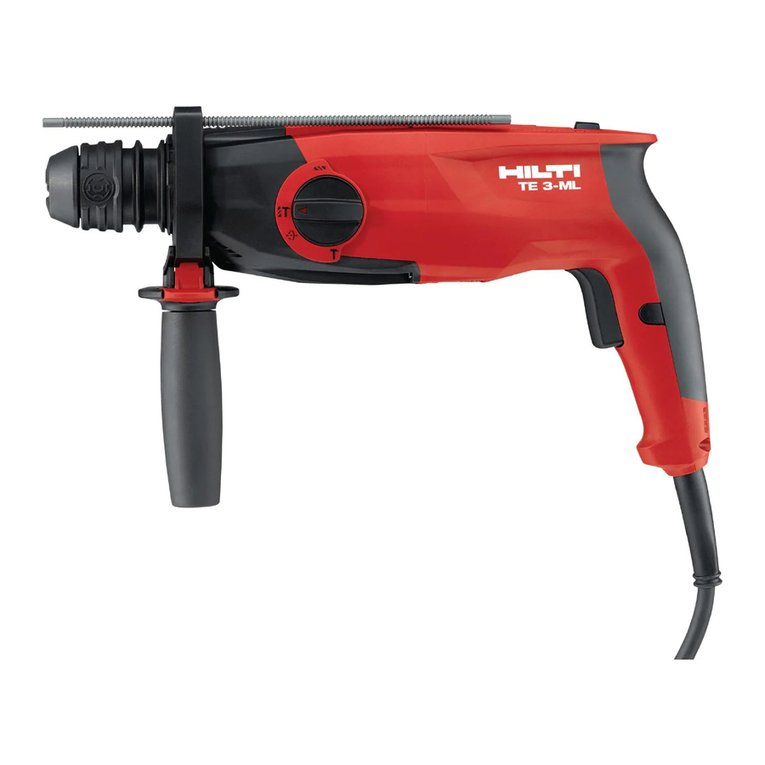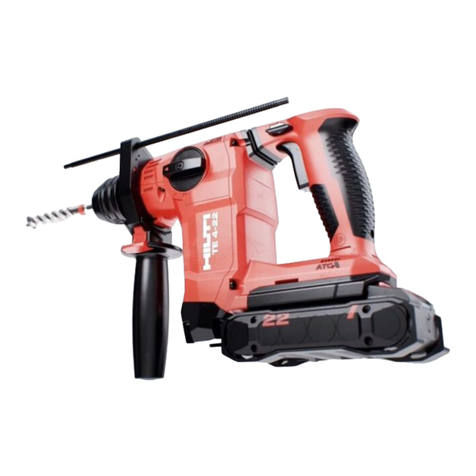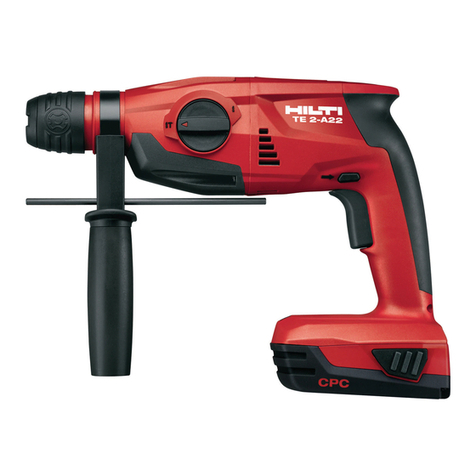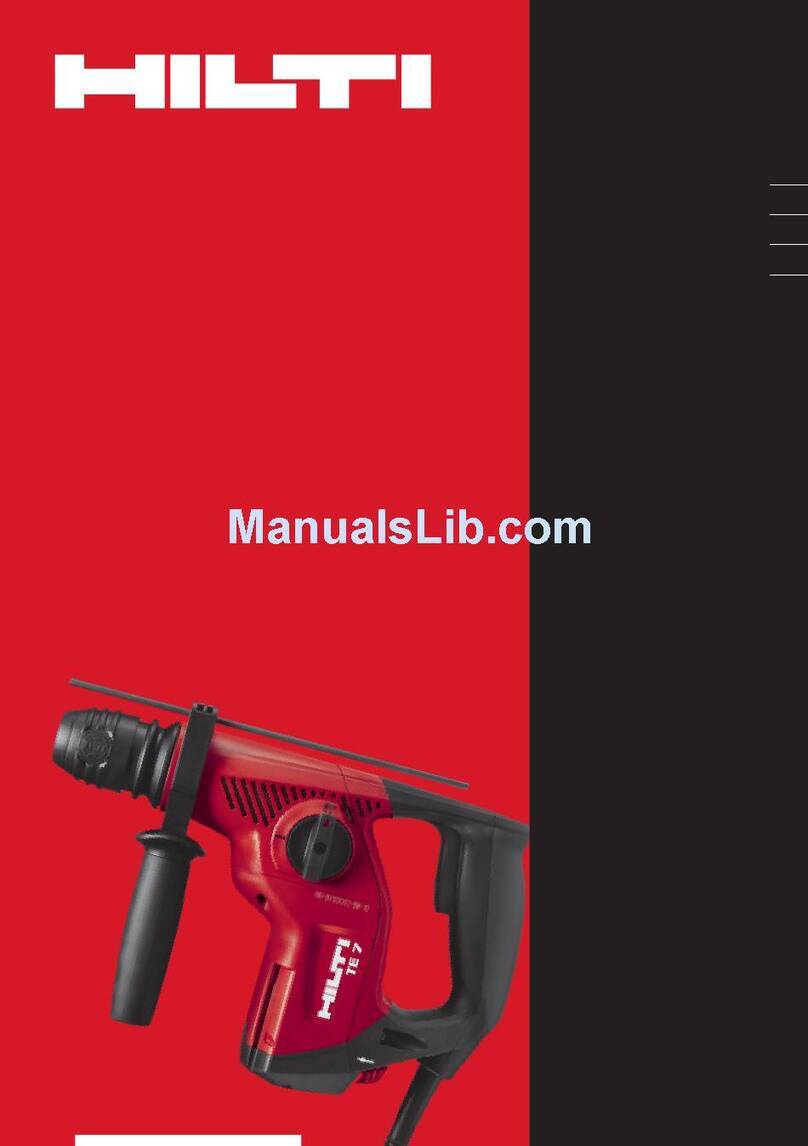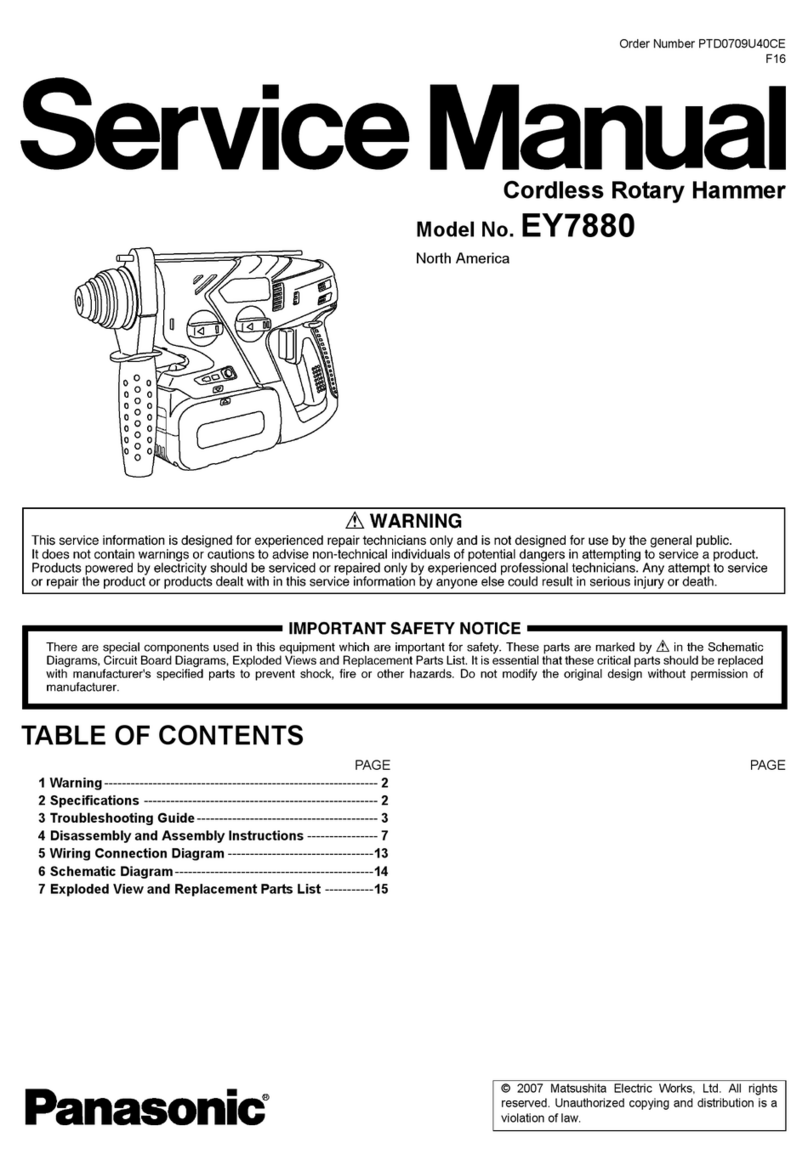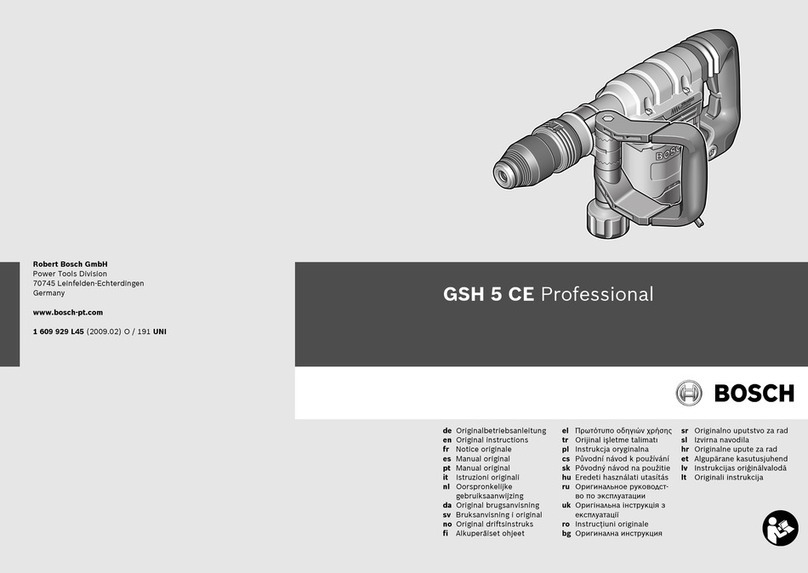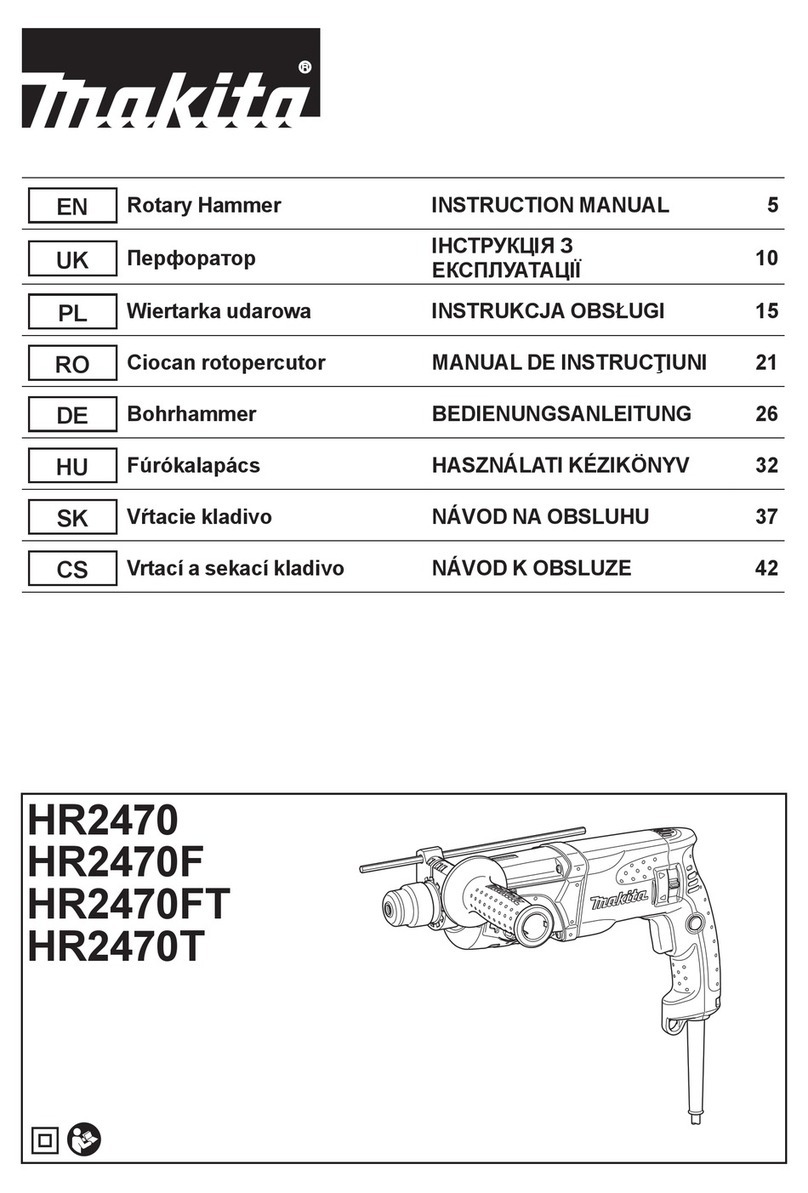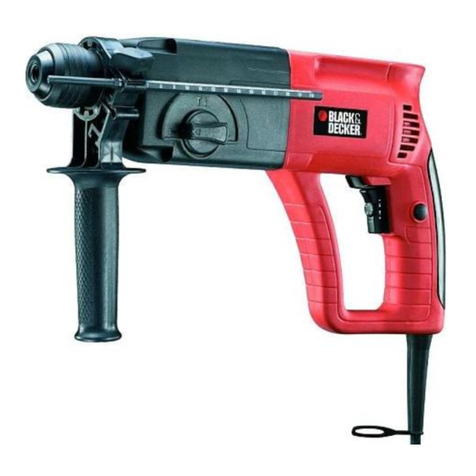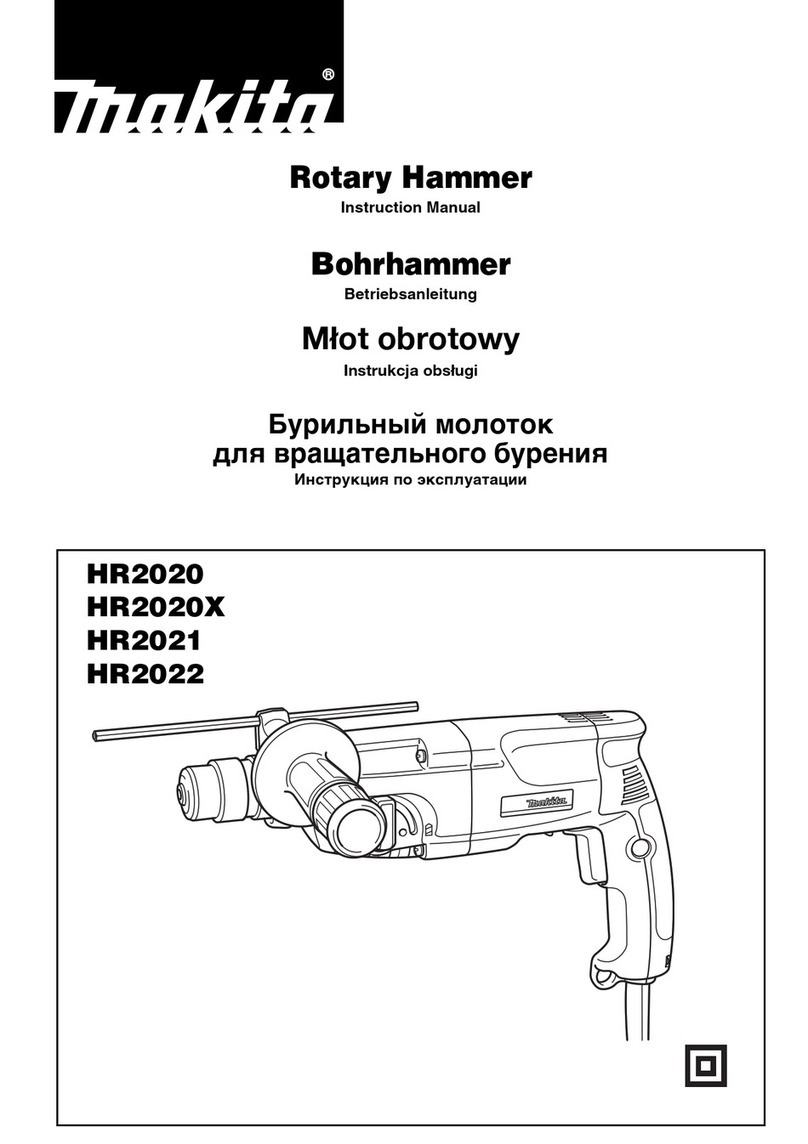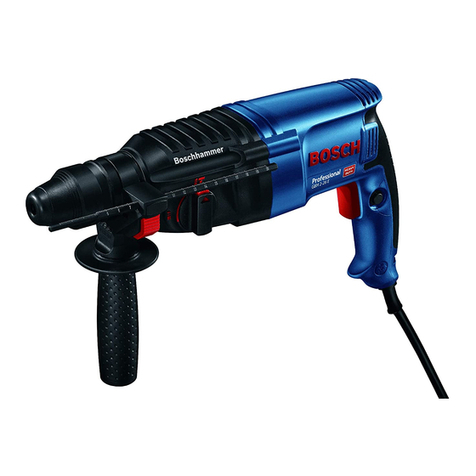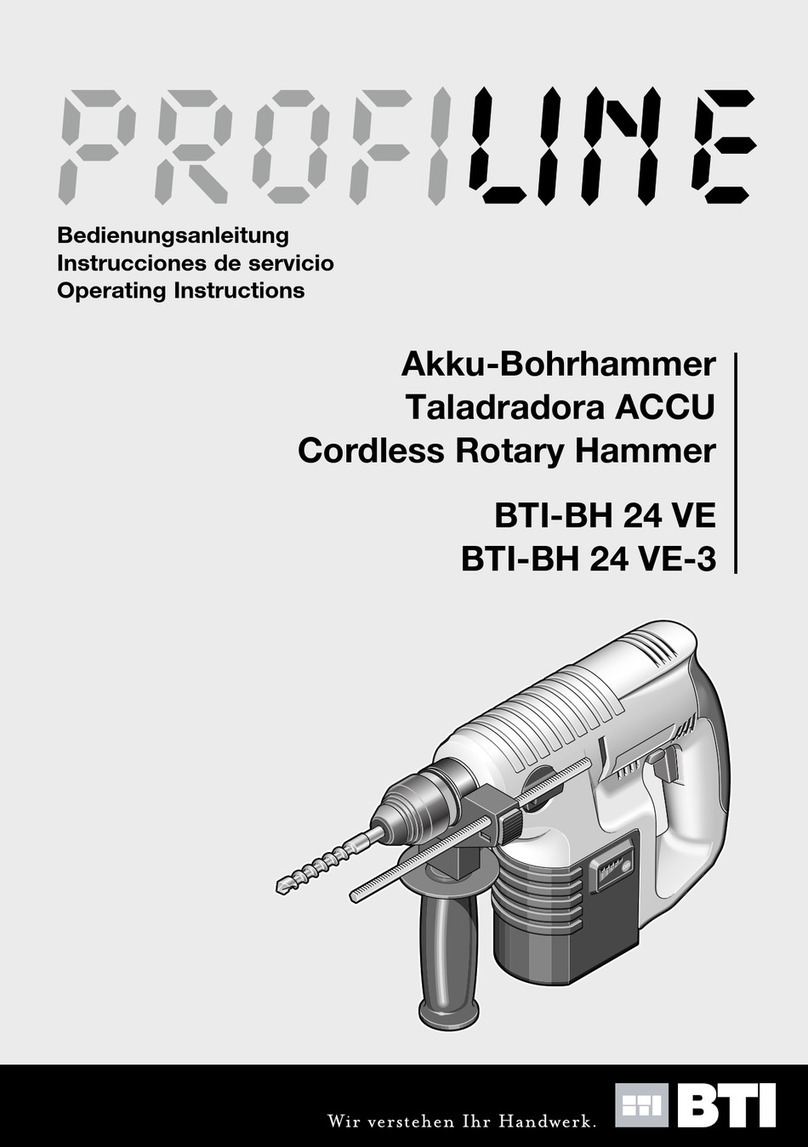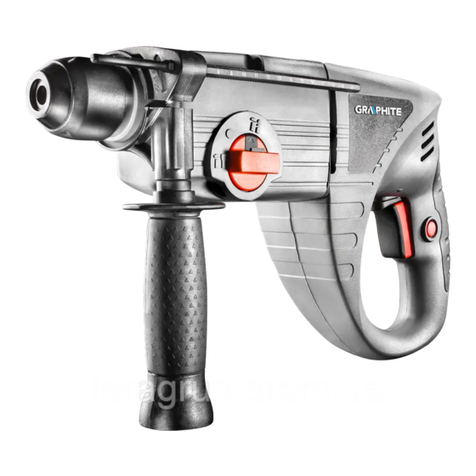4
Safety precautions
When using electric tools, the following fundamental
safety precautions must always be observed in order to
avoid the risk of injury, electric shock and fire hazards.
Please read and observe the instructions below before
using the tool.
1. Use protective equipment.
2. Wear suitable working clothing.
Don’t wear loose clothing, loose long hair or jewellery
as it can become caught up in moving parts of the elec-
tric tool. Wear non-slip shoes.
3. Make the working area safe.
Objects which could cause injury should be removed
from the working area. Ensure that the area is well lit.
When working, keep other persons, children in partic-
ular, outside the range of the tool you are using.
Use clamps or a vice to secure the workpiece.
4. Take the influences of the surrounding area into
account.
Don’t expose the tool to rain or snow and don’t operate
it in the vicinity of flammable liquids or gases.
5. Check the tool each time before use.
Check the condition of the tool, the supply cord and
mains plug. Don’t use it if it is damaged, incomplete or
if the controls cannot be operated correctly.
6. Use the correct insert tool.
Ensure that the insert tools (drill bits, adaptors, etc.) are
equipped with the appropriate connection end for the
chuck system in use and that they are locked in position
correctly in the chuck.
Use only the recommended original Hilti accessories
and auxiliary equipment.
7. Use the tool only for the purposes for which it is
intended.
8. Apply a safe working method.
Always concentrate on the job. Proceed carefully and
do not use the tool if you are distracted from your work.
Avoid unfavourable body positions. Always ensure that
you have a safe stance. Always hold the tool in both
hands when it is in use. Always use the side handle.
Ensure that the side handle is fitted correctly and tight-
ened securely . Hold the side handle at its end when
drilling and pay attention at all times - the drill bit may
become stuck unexpectedly. Switch the tool off if you
are distracted from your work.
When the tool is in use, always guide the supply cord
away from the tool to the rear.
Never carry the tool by the supply cord. Don’t unplug
the tool by pulling on the supply cord. Don’t expose the
supply cord to heat, oil or sharp edges. If the supply
cord becomes damaged while working, don’t touch it -
unplug the mains plug immediately.
9. Take care to avoid concealed cables and pipes.
Concealed electric cables or gas and water pipes pre-
sent a serious hazard if damaged while you are work-
ing. Accordingly, check the area in which you are work-
ing beforehand (e.g. using a metal detector). Avoid con-
tact between your body and earthed / grounded objects
such as pipes or radiators. External metal parts of the
tool may become live, for example, when an electric
cable is drilled into inadvertently.
10. Avoid unintentional starting.
Don’t carry the tool with your finger on the control switch
while it is connected to the mains supply. Check that the
tool is switched off before connecting it to the mains
supply. Pull the plug out of the mains socket when the
tool is not in use, e.g. during pauses between work,
before maintenance and when changing insert tools.
11. Keep the electric tool and insert tools in good
condition.
Follow the care and maintenance instructions and replace
insert tools in good time. Never operate the tool when
it is dirty or wet. Dust or dampness on the surface of the
tool make it slippery and difficult to hold and may, under
unfavourable conditions, present a risk of electric shock.
Repairs to the tool may be carried out only by an autho-
rised electrical specialist using original Hilti spare parts.
Failure to observe this point may result in damage to the
tool or present a risk of accident. Accordingly, if neces-
sary, have the tool repaired at a Hilti service centre or
authorised Hilti repair workshop.
12. Keep electric tools in a secure place.
Electric tools, when not in use, should be locked away
in a dry place, out of reach of children.
Wear ear
protection
Wear goggles Wear protective
gloves
Wear respiratory
protection when
the work causes
dust
Printed: 07.07.2013 | Doc-Nr: PUB / 5070813 / 000 / 00

